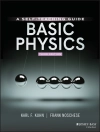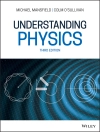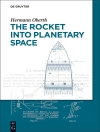This easy accessible textbook provides an overview of solar to electric energy conversion, followed by a detailed look at one aspect, namely photovoltaics, including the underlying principles and fabrication methods. Ed Wolf, an experienced author and teacher, reviews such green technologies as solar-heated-steam power, hydrogen, and thermoelectric generation, as well as nuclear fusion. Throughout the book, carefully chosen, up-to-date examples are used to illustrate important concepts and research tools.
The opening chapters give a broad and exhaustive survey of long term energy resources, reviewing current and potential types of solar driven energy sources. The core part of the text on solar energy conversion discusses different concepts for generating electric power, followed by a profound presentation of the underlying semiconductor physics and rounded off by a look at efficiency and third-generation concepts. The concluding section offers a rough analysis of the economics relevant to the large-scale adoption of photovoltaic conversion with a discussion of such issues as durability, manufacturability and cost, as well as the importance of storage.
The book is self-contained so as to be suitable for students with introductory calculus-based courses in physics, chemistry, or engineering. It introduces concepts in quantum mechanics, atomic and molecular physics, plus the solid state and semiconductor junction physics needed to attain a quantitative understanding of the current status of this field. With its comments on economic aspects, it is also a useful tool for those readers interested in a career in alternative energy.
สารบัญ
Ch. 1 A Survey of Long Term Energy Resources
1.1 Introduction
1.2 Direct Solar Influx
1.3 Secondary Solar Driven Sources
1.4 Earth-based Long-term Energy Resources
1.5 Plan of This Book
Ch. 2 Physics of Nuclear Fusion: the Source of All Solar-related Energy
2.1 Protons in the sun’s core
2.2 Schrodinger’s Equation for the motion of particles
2.3 Protons and Neutrons and Their Binding
2.4 Gamow’s Tunneling Model applied to fusion in the sun’s core
2.5 A Survey of Nuclear Properties
Ch. 3 Atoms, Molecules and Semiconductor Devices
3.1 Bohr’s Model of the Hydrogen Atom
3.2 Charge Motion in Periodic Potentials
3.3 Energy Bands and Gaps
3.4 Atoms, Molecules and the Covalent Bond
3.5 Tetrahedral Bonding in Silicon and Related Semiconductors
3.6 Donor and Acceptor Impurities, charge concentrations
3.7 The pn junction, diode I-V characteristic, photovoltaic cell
3.8. Metals and Plasmas
Ch. 4 Terrestrial Approaches to Fusion Energy
4.1 Deuterium Fusion Demonstration Based on Field Ionization
4.2 Deuterium Fusion Demonstration Based on Muonic Hydrogen
4.3 Deuterium Fusion Demonstration in Larger-Scale Plasma Reactors
Ch. 5 Introduction to Solar Energy Conversion
5.1 Sun as an Energy Source, Spectrum on Earth
5.2 Heat Engines and Thermodynamics, Carnot Efficiency
5.3 Solar Thermal Electric Power
5.4 Generations of Photovoltaic Solar Cells
5.5 Utilizing Solar Power with Photovoltaics: the rooftops of New York
5.6 Utilizing Solar Power with Photovoltaics: the possibility of space-based solar power
Ch. 6 Solar Cells Based on Single pn Junctions
6.1 Single Junction Cells
6.2 Single-crystal vs. Thin-film cells, Si vs. Cd Te
6.3 Cu In Ga Se (CIGS) Thin Film Solar Cells
6.4 Thin Film Cd Te Cells
6.5 Dye-sensitized Solar Cells
6.6 Polymer Organic Solar Cells
Ch. 7 Multi-Junction and Energy Concentrating Solar Cells
7.1 Tandem Cells, Premium and Low Cost
7.2 Organic Molecules as Solar Concentrators
7.3 Spectral splitting cells
7.4. Summary and Comments on efficiency
7.5 A Niche Application of concentrating cells
Ch. 8 Third Generation Concepts, Survey of Efficiency
8.1 Intermediate Band Cells
8.2 Impact Ionization and Carrier Multiplication
8.3 Ferromagnetic Materials for Solar Conversion
8.4 Efficiencies: Three Generations of Cells
Ch. 9 Cells for Hydrogen Generation;
Aspects of Hydrogen Storage
9.1 Efficient Photo-catalytic Dissociation of Water into Hydrogen and Oxygen
9.2 Hydrogen Fuel Cell Status
9.3 Storage and Transport of Hydrogen as a Potential Fuel
9.4 Surface Adsorption for Storing Hydrogen in High Density
9.5 Economics of Hydrogen at Present
Ch. 10 Large Scale Fabrication, Learning Curves, Economics including Storage
10.1 Fabrication methods vary but have similar learning curves
10.2 Learning Strategies for Module Cost
10.3 Thin film cells, Nano-inks for Printing Solar Cells
10.4 Large-scale Scenario Based on Thin Film Cd Te or CIGS Cells
10.5 Comparison of Solar Power vs. Wind Power
10.6 The Importance of Storage and Grid Management to Large Scale Utilization
10.7 Opportunities for higher efficiency in total energy use
Ch. 11 Prospects for Solar and Renewable Power
11.1 Rapid Growth in Solar and Wind Power
11.2 Renewable Energy beyond Solar and Wind
11.3 The Legacy World, Developing Countries, and the Third World
11.4 Can Energy supply meet demand in the longer future?
Exercises
Useful Information
Glossary
Index
เกี่ยวกับผู้แต่ง
Edward L. Wolf is Professor of Physics at the Polytechnic University in New York City. His long-term teaching experience ranges from undergraduate courses to the direction of thesis research. His research activities cover solid state physics, scanning tunneling microscopy, electron tunneling spectroscopy and superconductivity. Edward Wolf holds industrial and academic appointments. The former Director of the National Science Foundation is Fellow of the American Physical Society. He has authored over 100 refereed publications as well as a monograph on Electron Tunneling Spectroscopy and two successful texts on Nanophysics.












